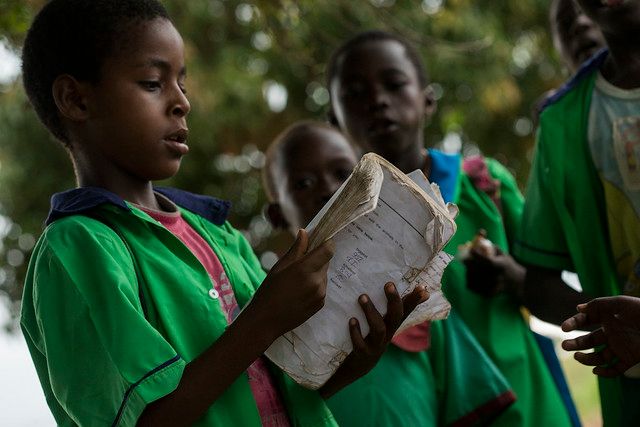Introduction
The education systems of South Sudan and Kenya present an intriguing study in contrast and potential. While South Sudan is in the process of rebuilding its educational infrastructure amid challenging circumstances—including prolonged civil wars that have prevented it from establishing a robust education system, Kenya’s system has evolved through decades of investment and reform. In this post, we’ll conduct a comprehensive comparative analysis to highlight strengths, challenges, and opportunities for both countries.
Overview of South Sudan’s Education System
- Current Landscape and Challenges
- Rebuilding from Conflict: South Sudan’s education sector is recovering from years of conflict, which has impacted infrastructure and access.
- Limited Resources: The country faces challenges such as insufficient funding, inadequate school facilities, and a shortage of trained teachers.
- Focus on Basic Literacy: With a large population of out-of-school children, basic literacy and numeracy remain primary educational goals.
- Recent Initiatives and Reforms
- Government and NGO Efforts: Various initiatives are underway to rebuild schools, improve teacher training, and integrate technology into education.
- Digital Solutions: Emerging tools like school and exams management systems are being introduced to streamline administrative processes and improve learning outcomes.
Overview of Kenya’s Education System
A Model of Progressive Education
- Free Primary Education: Kenya’s introduction of free primary education in 2003 significantly increased enrollment rates.
- Robust Curriculum: Kenya boasts a comprehensive curriculum that balances academic subjects with life skills, preparing students for both higher education and the workforce.
- Teacher Development: The country has invested heavily in teacher training programs, resulting in a more skilled and qualified teaching workforce.
Infrastructure and Technology Integration
- Modern School Facilities: Kenya has seen steady improvements in school infrastructure, including modern classrooms, laboratories, and libraries.
- Digital Learning Innovations: The integration of technology in classrooms—such as digital libraries and e-learning platforms—has enhanced educational accessibility and quality.
Comparative Analysis: South Sudan vs. Kenya
1. Infrastructure and Facilities
South Sudan
- Challenges: Many schools are still under construction or in disrepair due to past conflicts and limited funding.
- Opportunities: Significant potential exists for infrastructure development, particularly with international partnerships and investment.
Kenya
- Strengths: Kenya benefits from a more established infrastructure network with ongoing upgrades and modern facilities.
- Innovations: The use of digital tools in education is more widespread, enhancing both learning and administrative efficiency.
2. Curriculum and Academic Standards
South Sudan
- Focus on Basic Education: The curriculum is evolving to meet the needs of a recovering nation, with emphasis on literacy, numeracy, and vocational training.
Kenya
- Balanced Curriculum: Kenya offers a diverse and balanced curriculum that not only covers core subjects but also emphasizes critical thinking, technology, and life skills.
- Examination Systems: Robust examination systems and regular assessments ensure that academic standards are maintained.
3. Teacher Training and Professional Development
South Sudan
- Current Needs: There is an urgent need for comprehensive teacher training programs to address gaps in educational delivery.
- Initiatives: International NGOs and local government bodies are working to enhance teacher training, though progress is gradual.
Kenya
- Established Programs: Kenya has a well-developed framework for teacher education and ongoing professional development, contributing to higher teaching quality.
- Continuous Improvement: Regular training sessions and curriculum updates ensure that teachers remain at the forefront of educational best practices.
4. Government Policies and Investment
South Sudan
- Policy Challenges: The government is focused on rebuilding and reform, but policy implementation can be hampered by resource constraints.
- Investment Opportunities: Increased investment, both from the government and international partners, is critical to advancing the education sector.
Kenya
- Strategic Planning: Kenya’s long-term education policies have led to steady improvements, with significant budget allocations and policy reforms.
- Private Sector Involvement: There is active participation from the private sector in funding and innovating educational projects.
Lessons Learned and Future Opportunities
For South Sudan:
- Adopt Best Practices: Learning from Kenya’s experience can help accelerate infrastructure development, curriculum reform, and teacher training initiatives.
- Leverage Technology: Embracing digital solutions, such as advanced school management systems, can improve administrative efficiency and learning outcomes.
- Increase Stakeholder Collaboration: Strengthening partnerships with international donors, NGOs, and the private sector can provide the necessary resources and expertise.
For Kenya:
- Sustain Momentum: Continuous investment in infrastructure and teacher training is crucial to maintain high educational standards.
- Expand Digital Integration: Further integrating digital tools in remote and underserved areas can ensure equitable access to quality education.
Conclusion
The comparative analysis between South Sudan and Kenya’s education systems highlights both challenges and opportunities. While Kenya benefits from established infrastructure, curriculum reforms, and robust teacher training, South Sudan is poised for transformative change with targeted investments and strategic reforms. By learning from each other’s experiences and collaborating on innovative solutions, both countries can work towards creating inclusive and high-quality educational environments that empower future generations.
